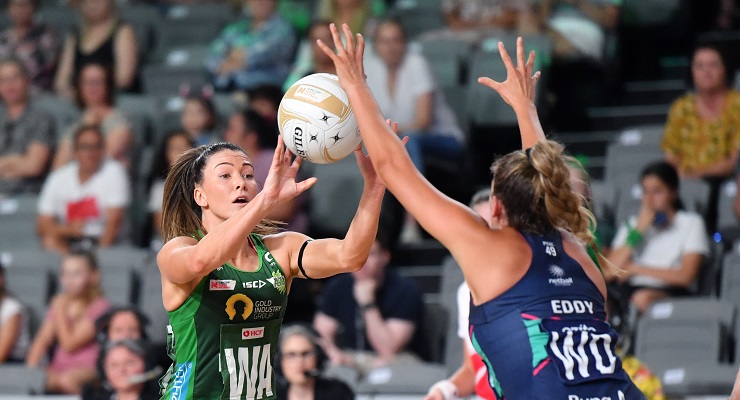
The Morrison government paid News Corp $40 million to make sport less accessible to Australians. The result? About three out of four households are losing access to events once broadcast free to air.
Foxtel is struggling in the streaming wars: reluctant to cannibalise its declining capital-intensive pay TV offering; forced to charge over the market set by Netflix and Stan; channelling ads into a largely ad-free space; chronically poor user experience.
Since Netflix Australia’s 2015 launch, Foxtel has dropped from its effective monopoly to, at best, third place in streaming behind Netflix and Nine’s Stan.
Binge is its fourth iteration of drama streaming (launched last May). It had 431,000 paying subscribers at the end of last year, and lags Netflix (4.5 million), Stan (more than 2 million), Disney+ (more than 1 million) and probably Amazon Prime.
So it’s turning to sport for rescue. The government grant provides the table stakes it needs in the current round of bids and counter-bids for rights equally against Australia’s free-to-air broadcasters and the global streaming giants.
For sport fans, this government-funded battle is undermining access to broadcast sport without much evidence that it’s working for the company. According to the December 31 figures released by News Corp at the weekend, only about a quarter of Australian households pay for access to Foxtel or its sports streaming service Kayo.
It’s not great for sport, either, forced to trade universal free-to-air audiences for short-term dollars.
Australia’s three-decade “anti-siphoning” legislation is meant to ensure sports that matter are free to watch for all Australians. Now government money has helped Foxtel outbid Nine twice — for cricket rights in 2019 and last week for netball.
Foxtel’s federal government money is to support the broadcast of women’s sport. Its joint bid with Seven for cricket rights included women’s games. As part of the deal, Seven waived its rights to both men’s and women’s one-day internationals (which are largely covered by the anti-siphoning list), leaving Foxtel/Kayo with exclusive broadcast rights.
Now it’s been used to slide netball out from under Nine which, in a rare breach of corporate solidarity, belled the cat: “We are disappointed that after working with netball to grow the game for the past five years we find they have taken the deal with Foxtel which is supported by government money which we don’t have access to.”
It’s not the first time this government has played around with anti-siphoning rights to the resulting benefit of News Corp. In 2017 it winnowed the list, including dropping the English FA Cup, now exclusively available through Foxtel/Kayo.
Last week News Corp entered into a new deal with Foxtel partner Telstra to fold the NRL and AFL apps into Kayo. Those apps provided live streaming of all games on mobile screens.
Telstra CEO Andy Penn said the deal would give customers “the chance to watch a wider range of sports on their choice of screen”. By “wider range”, of course, he meant “narrower choice”: Foxtel’s Kayo, at $25 a month (after a 12-month discount), or nothing.
Telstra is caught in its own squeeze. It’s competing with Optus, which offers Optus Sport to draw customers to its mobile network. Built around the English Premier League, it has around 840,000 subscribers at about $15 a month.
At the end of last year, Kayo had 624,000 paying subscribers. It’s the most expensive streaming service and will rely on the consolidation of the Telstra apps to break the million mark. It’s a sign of how far Foxtel lags in streaming that it needs the Telstra deal together with whole-of-sport rights like netball just to jump a niche offering like Optus Sport.
Meanwhile the existing streamers are making their move, with Stan launching a $10-a-month sports upgrade (initially for rugby union and tennis) and Amazon Prime announcing a deal with Swimming Australia.








The fact you cannot reliably watch the Super Rugby, the A-League, or the Socceroos on free to air TV has killed those sports. I am obsessed by the footy and have played soccer and football of all descriptions all my life here in Canberra and now coach. But I will not pay Murdoch a cent to watch the A-League or the Brumbies.
Until there are alternatives, I will continue to subscribe to the English Premier League and watch the AFL and NRL on free to air.
Go the Socceroos (I went to the World Cup in Russia) but not on Foxtel!
Soccer and rugby administations, get your act together.
This is just plain vanilla corruption and should be seen as such.. Why the police are not involved is a scandal..
Wow, an argument for the sports anti-siphoning list. What next?
The trouble with this line is that free to air TV doesn’t show a lot of sport, apart from NRL, cricket and AFL. The old white blokes’ favourites, that is. Hence the other sports suffered, or ended up being streamed anyway. And the fact that the FA Cup made the list shows how out of touch it is.
I share many of your reservations re the current streaming landscape, but it has widened the availability of live sport. And we not merely talking ‘minority’ sports: Optus is on the way to a million subscribers showing football from various parts of the planet. Kayo does similar as well as a lot of local footie. Its not as if all this sport would otherwise be covered on free to air.
Football in particular needs to set up a streaming arrangement that it controls and go round the old media companies, but football needs to do a whole lot of things to connect with its base and monetise itself.
Where is water polo – surely the toughest sport of all?
Foxtel has been getting good write ups recently, bonanza profits for once, but most of that US. Very hard to work out from those write ups whether the Australian product is making money.
I’ll never own Foxtel, hate to encourage the Murdoch media caravan, but won’t feel any personal effect unless NRL, AFL and The Masters golf are removed from the anti-siphon list.
Why any major or minor sport thinks restricting their audience to only 25% of the market is a good long term decision is beyond me.